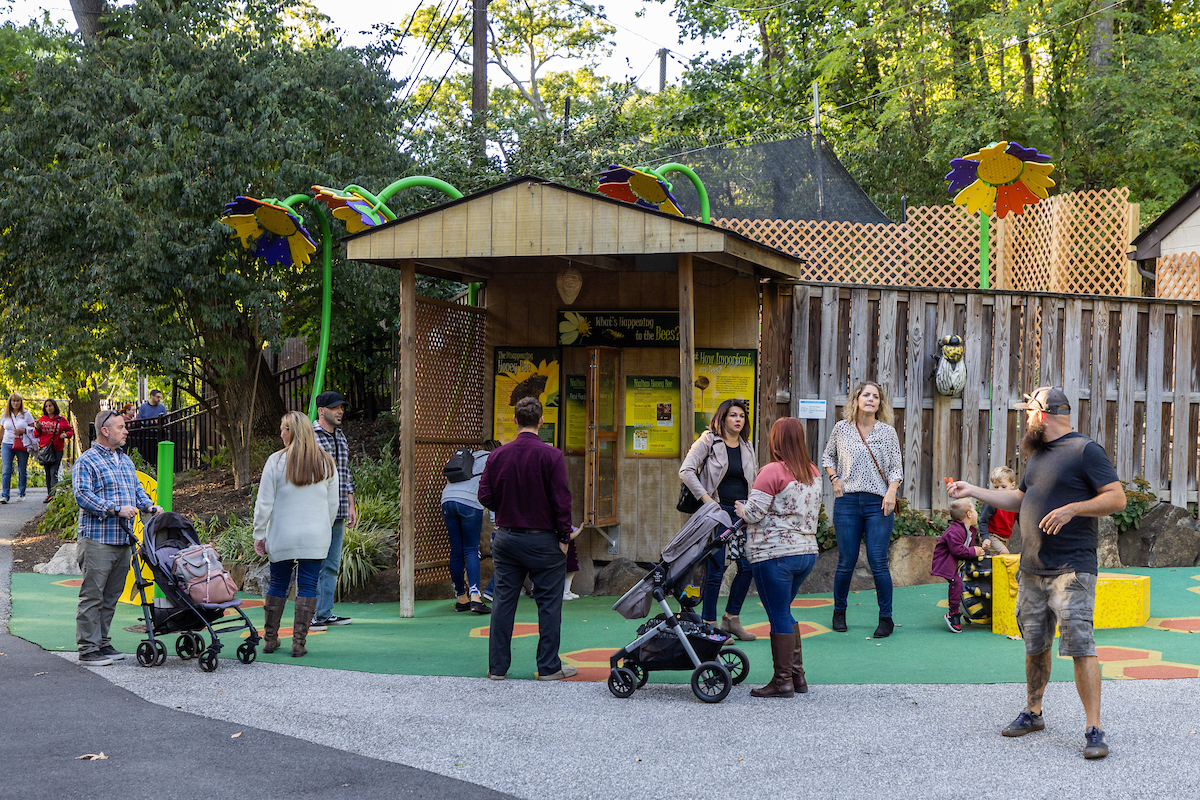By Karen Hendricks
 There’s a profound need for foster families to care for children in communities across the country, including right here in Frederick County. Meet national and local advocates making a difference, and in honor of National Adoption Month in November, learn how fostering can be a path to adoption—and becoming a “forever family.”
There’s a profound need for foster families to care for children in communities across the country, including right here in Frederick County. Meet national and local advocates making a difference, and in honor of National Adoption Month in November, learn how fostering can be a path to adoption—and becoming a “forever family.”
From foster parent to advocate
More than 150 children have been welcomed into the Eby family over the years.
“My wife and I have been foster parents for 22 years,” says Arnold “Arnie” Eby, 60, of Hagerstown. “For us, it’s been an incredible opportunity to see our world expanded and enlarged. I didn’t realize how much it would change the trajectory of my life.”
Eby recently closed that chapter of his life to take on a new role—director of the National Foster Parent Association (NFPA), a nonprofit dedicated to being “a respected voice for foster, kinship and adoptive families through networking, education and advocacy.”
The need for foster parents is greater than ever—and the reasons why are complex.
Foster care is a bridge—providing care to children who have endured abuse, neglect, parental substance abuse or other situations that make their home unsafe, through no fault of their own.
“On any given day, there are more than 400,000 children in foster care across the U.S.,” says Eby. “At the same time, there’s been a decrease in the number of foster families as a result of the pandemic and other forces.”
Some states, he says, are experiencing a 40% drop in foster parents, while others have plummeted by as much as 70%.
“Coming out of the pandemic, we saw a significant number of older foster families, those 55+, saying this was their last placement because they were also caring for another family member with needs,” Eby says.
Additional issues, Eby says, are within the child care workforce as well as mental health services, both of which have been stretched thin, exacerbated by the pandemic.
From fostering to adoption

Although foster parents often face challenges, there are also many benefits, including “the opportunity to plant seeds that have the potential to last a lifetime—the opportunity to be a peer mentor to the child and possibly their parents,” Eby says.
“It’s an incredible position—foster parents may be some of the most important people in that child’s life during that time,” says Rita Soronen, president and CEO of the Dave Thomas Foundation for Adoption, based in Columbus, Ohio. “There are kids every day with complex needs and trauma issues, and we need families to step forward to help.”
The average American child in need of foster care is 8 years old, says Soronen. But there are growing disparities—an overrepresentation of Black children and a growing overrepresentation of Hispanic children.
Foster care is a temporary situation for the majority of children. Many return home,
reunited with their parents. However, there are currently 113,000 children in the foster care system who are eligible for adoption, meaning that parental rights have been terminated.
Eby says, in many cases, it’s because their parents have died.
“They tend to be children aged 9 and older, children with siblings and children with special needs,” says Soronen.
Her organization, named for the famous founder of Wendy’s restaurants—who was adopted himself—is a national nonprofit working to close that gap and help foster kids find forever families to adopt them.
About 60% of foster kids “freed for adoption” are indeed adopted—but that means about 20,000 children age out of foster care when then turn 18 every year, Soronen notes.
“We know they’re at greater risk of being homeless, jumping back into systems or developing substance abuse issues,” Soronen says.
Many myths and misperceptions propel teens to age out of foster care. First, many people don’t realize fostering can be a potential avenue to adoption. Secondly, the idea of fostering or adopting teens can make some potential parents wary.
“We absolutely need families to step forward, understanding that stage of life, willing to give teens that love and security,” Soronen says. “Teens will assert their independence, testing boundaries but with an extra layer of trauma or loss, so deeply understanding the path that child has taken is important.”
In some cases, foster children may be dealing with major life changes—separation from siblings or changes in schools.
There’s a multitude of information about foster care, including how to become a foster parent, on both organizations’ websites. It’s a process that generally requires about 30 hours of training, Eby says, depending on whether parents are certified by a foster care agency that’s publicly-run, county-run or privately-run. While foster parents must prove they have a source of income, foster care costs can be subsidized by the county or state.
“A recent survey of foster parents surprisingly found that 40% were single-parent families—something we’re continuing to see rise across the country,” Eby says.
Foster parents can fulfill many roles. According to Soronen, “They can foster temporarily in emergency situations, there are others who take teenagers or infants, some foster for a few months and some may foster for years and take multiple children in.”
Drawing on his 22 years of experience as a foster parent, Eby offers this advice to anyone considering fostering a child: “Expect the unexpected. I have learned I don’t necessarily have all the answers,” he says, noting that foster parents will need a network of support. “It’s about working together for a positive outcome
that creates space for a young person to grow, develop and contribute to the community.”
The bottom line, for Soronen, is this: “If you’re taking care of one child,” she says, “you’re going to make a difference in that child’s life. We see success stories of children who have been lingering in the system for years, so I know there’s hope at the end of
the tunnel for children and families who get involved. That’s what keeps me going and gives me great joy.”
For more information, please visit davethomasfoundation.org and nfpaonline.org






